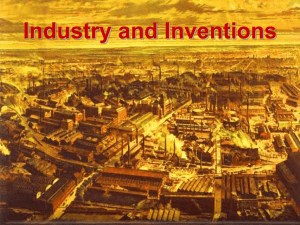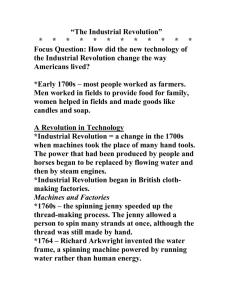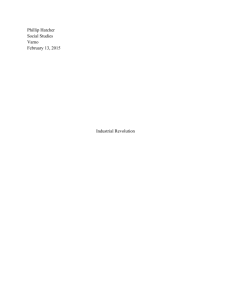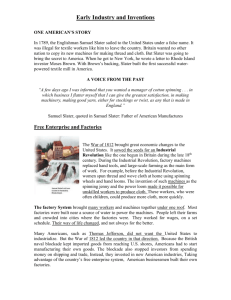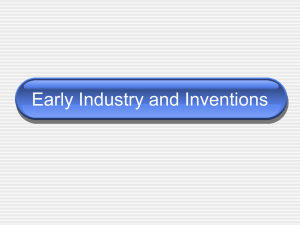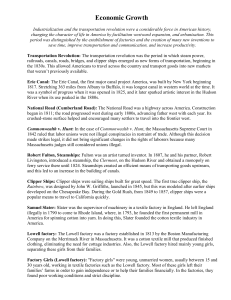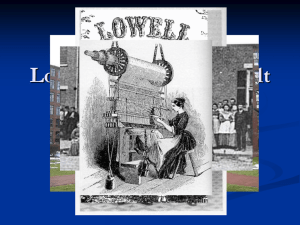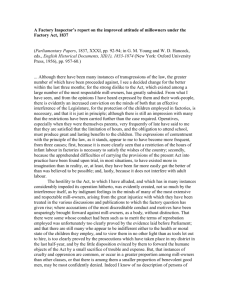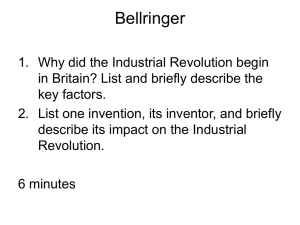industrial_revolution
advertisement
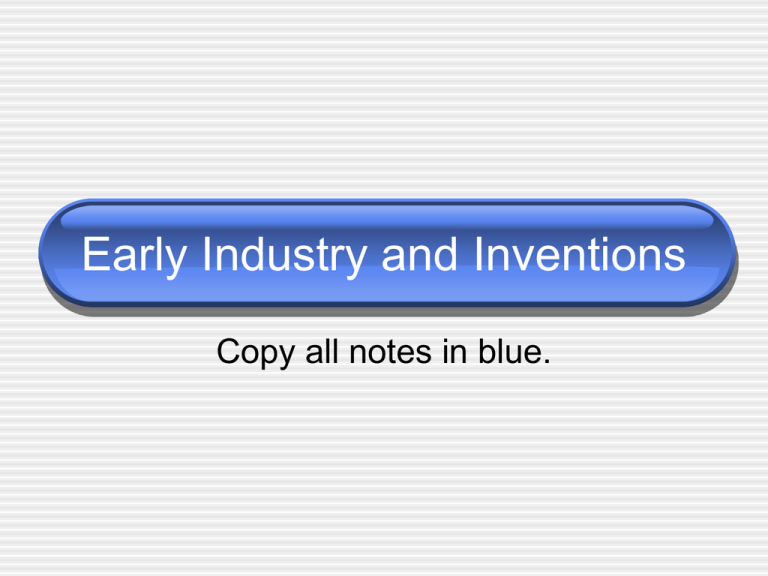
Early Industry and Inventions Copy all notes in blue. Agenda • EQ: How did reform movements help to shape the United States prior to the Civil War? Warm-Up: Why did manufacturing increase after the war of 1812? MLQ: How can we learn about the Industrial Revolution by determining important facts and details? Vocabulary Innovation: The act of introducing something new Exploit: To take advantage of a person or situation The Skype is a new innovation that allows people to see and speak with one another through the computer. Joseph Kony exploits children when he forces them to join the LRA. Work period: Students will: 1) In a group analyze primary source documents 2) Answer tiered questions Share: Share answers Closing: Summary of lesson • H.W. The Lowell Girls used writing to express their feelings about mill life. You are going to create your own version of the Lowell Offering Magazine. Write an article describing labor conditions in the mill and what you typical day was like. Industrial Revolution • The 1st Industrial Revolution began in England in the late 1700’s. • People began creating ways to use machines to make things more efficient. • An industrial revolution is when hand tools are replaced by factory machines. Spinning Jenny and Power Loom • Before the I.R., clothes were made at home. • In 1764 James Hargreaves invented an improved spinning jenny, a handpowered spinning machine. • In 1785, Edmund Cartwright created the first power loom, which was mechanical version of a regular loom, which combined threads to make cloth. • Afterwards, clothes were made by machines in factories. • Often these machines were run by children. Factory System • The factory system had many workers under one roof working at machines. • Many people left farms and moved to the city to work in factories. They wanted the money that factories paid. • This change was not always for the better. New England Factories • Factories Come to New • • England with ideas brought from England by Samuel Slater. New England was a good place to have a factory. Factories needed water power, and New England had many fastmoving rivers. New England Factories Rhode Island System • Many men didn’t want to work at factories because they felt the job was too simple and boring. • Slater began to hire growing families to work in the factories. He built houses for them to live in. • This provided a cheap source of labor. • Created a company store and often paid workers with credit. Lowell Mills • In 1813, Francis Cabot Lowell built a factory in Massachusetts near the Charles River. • The factory spun cotton into yarn and wove the cotton to cloth. • Similar to Slater, Cabot didn’t hire he only hired women. The Lowell Girls • They worked for the good wages: between two and four dollars a week. • The girls worked over 12 hours a day in loud noise. • The girls usually only worked for a few years until they married. • The “Lowell girls” lived in company-owned boardinghouses. The Telegraph • The telegraph was • • • invented by Samuel Morse. This machine sent long and short pulses of electricity along a wire. With the telegraph, it took only seconds to communicate with another city. The invention of the telegraph brought the people of the nation closer to each other. Farming Technology • In 1836, John Deere invented a lightweight plow, which made preparing the ground for planting much less work. • The threshing machine separated the kernels of wheat from the husks, which was a faster than doing it by hand. • Cyrus McCormick invented a mechanical reaper, which cut grain from the fields and allowed farmers to plant more seed New Technologies help nation grow • With new farm equipment, Midwestern farmers grew food to feed Northeastern factory workers. • Midwestern farmers became buyers of Northeastern manufactured goods. • The growth of the textile factories increased the demand for Southern cotton. • This led to the expansion of slavery.
